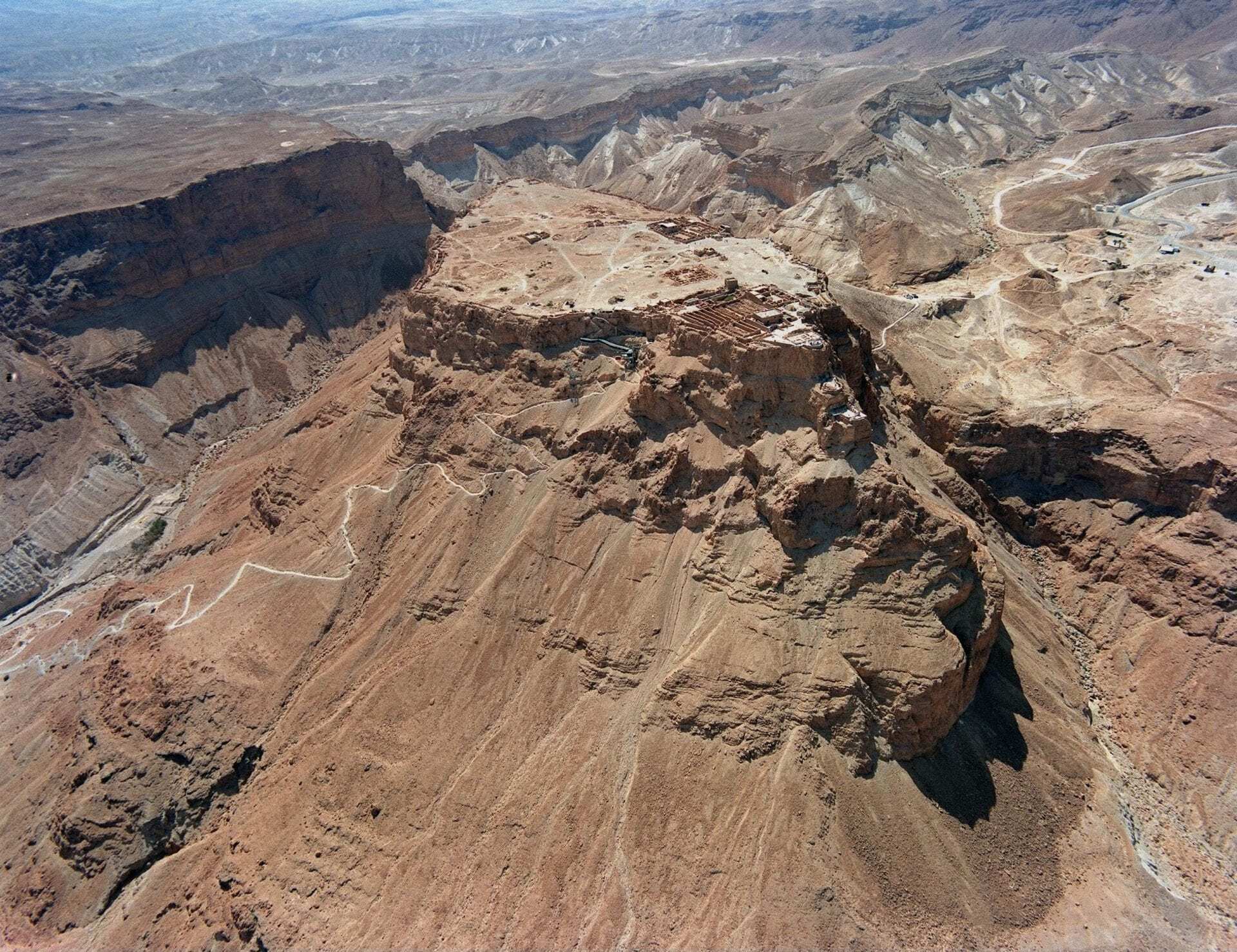Masada is an ancient fortress and palace, built on the plateau of a geological horst (regions that lie between normal faults and are either higher or lower than the area beyond the faults) in the Southern District of Israel overlooking the dead sea.
The earliest evidence of human occupation at Masada is found in an almost inaccessible cave, dubbed Yoram Cave, located on the southern cliff face 100 m below the plateau. Researchers discovered numerous plant remains, of which the discovery of 6,000-year-old barley seeds has led to speculation that Yoram Cave was a place of short-term refuge for Chalcolithic people.
Almost all historical information about Masada comes from the first-century historian Josephus Flavius (Jewish commander of Galilee during the First Jewish–Roman War) who writes that the site was first fortified by the Hasmonean ruler Alexander Jannaeus in the first century BC (although no definitive ruins have been discovered from that time).
The archaeological remains we see today at Masada were constructed by King Herod the Great, the Roman client king of Judea, whose territory was referred to as the Herodian kingdom. He is known for his colossal building projects throughout Judea, including his renovation of the Second Temple in Jerusalem and the expansion of the Temple Mount.
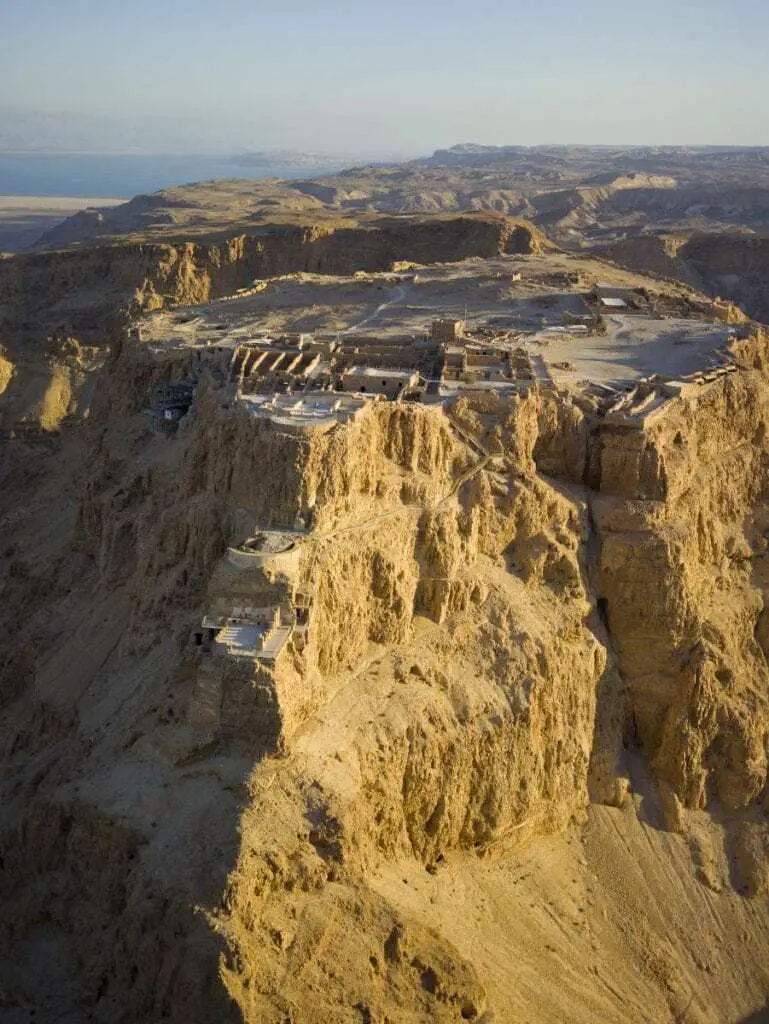
Masada saw three phases of construction during Herod’s reign, the first being the Western Palace around 35 BC along with various storerooms and army barracks. The second building phase in 25 BC included an addition to the Western Palace, a large storage complex for food, and the Northern Palace.
The Northern Palace is one of Herod’s more lavish palace-fortresses and was built on the hilltop in the style of classical Roman imperial architecture on the north side of Masada, continuing down the cliff’s edge over two additional levels. One of the notable architectural marvels at Masada are the great cisterns cut into the base of the mountain, built to provide water during times of siege and to supply the bathhouses and pools in an area where virtually no sustainable drinking water is available.
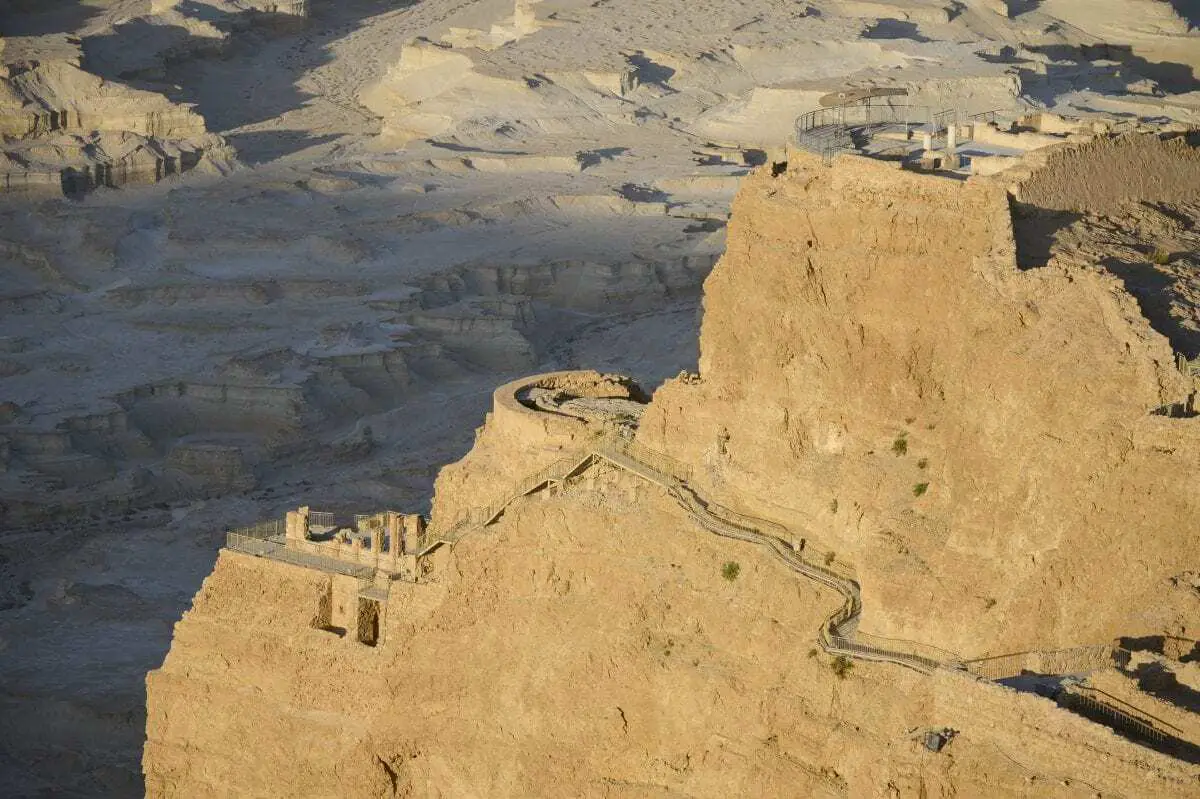
In 15 BC Herod fortified the site with a 4-metre-tall casemate wall that encircled Masada’s summit at a length of 1300 metres, reinforced by defensive towers making the site almost impregnable from all sides. With Herod’s death, his Kingdom was annexed into the Roman Empire, the Romans recognised the strategic importance of the fortress and established a permanent garrison.
After the destruction of the Second Temple during the “Great Revolt”, Masada was the centre of an epic siege occurring around 73 to 74 AD. Jewish rebels called the Sicarii had overthrown the Roman garrison and modified the site as a refuge. In response, the Roman governor, Lucius Flavius Silva, led the legion X Fretensis, a number of auxiliary units and Jewish prisoners of war to lay siege to the mountain.
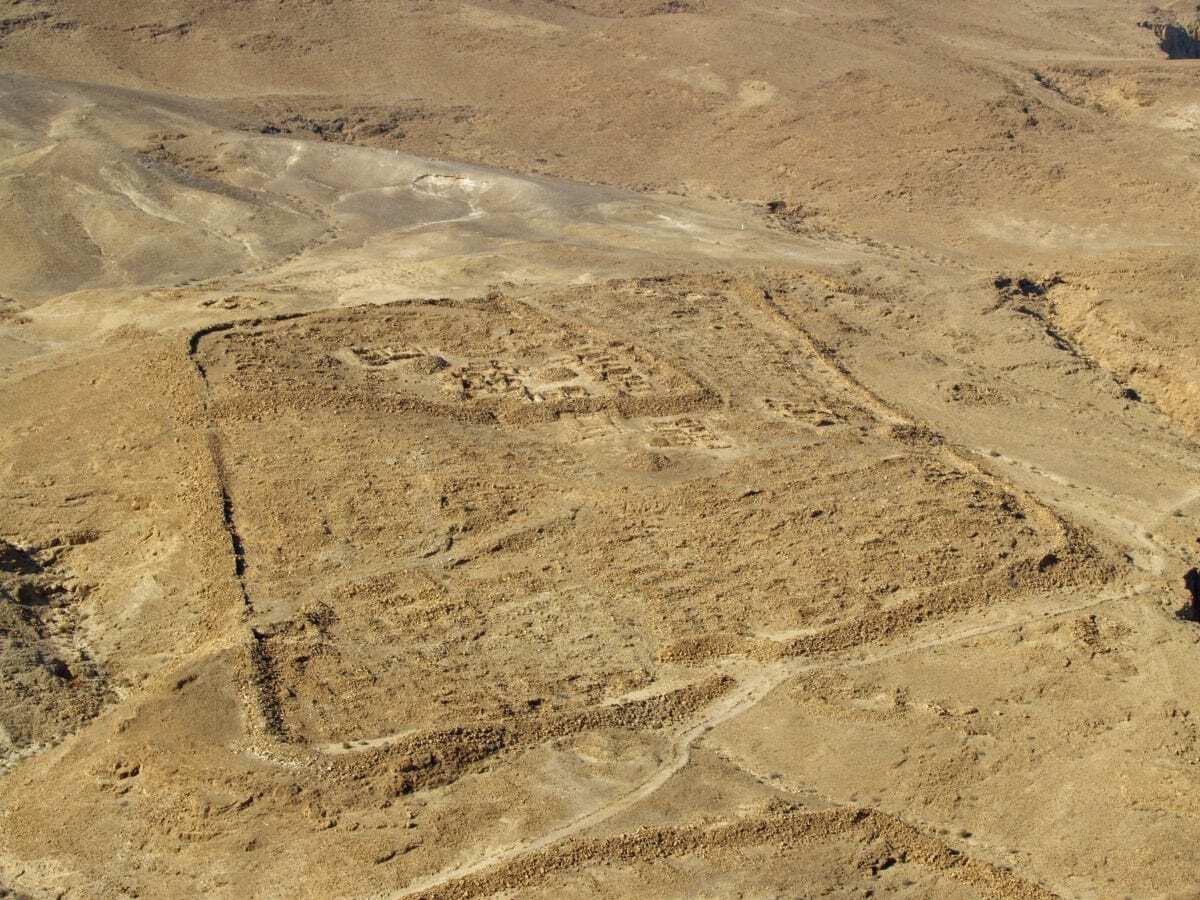
The Romans constructed a circumvallation wall that encircled Masada, with supporting military forts and encampments. The Romans then focused their attention to building a giant siege ramp on the western face of the plateau. Josephus Flavius notes that the ramp was completed in the spring of 73 AD and a siege tower was maneuvered to the summit that breached the walls.
What happened next has led to intense scholarly debate. Joseph reported that “it [was] by the will of God, and by necessity, that [they] are to die” and that the hundreds of defenders had drawn lots and killed each other in turn, and so had chosen death over slavery. Significant discrepancies exist between the archaeological findings and Josephus’ writings with some archaeologists arguing that there’s no evidence to co-inside with the mass suicide.
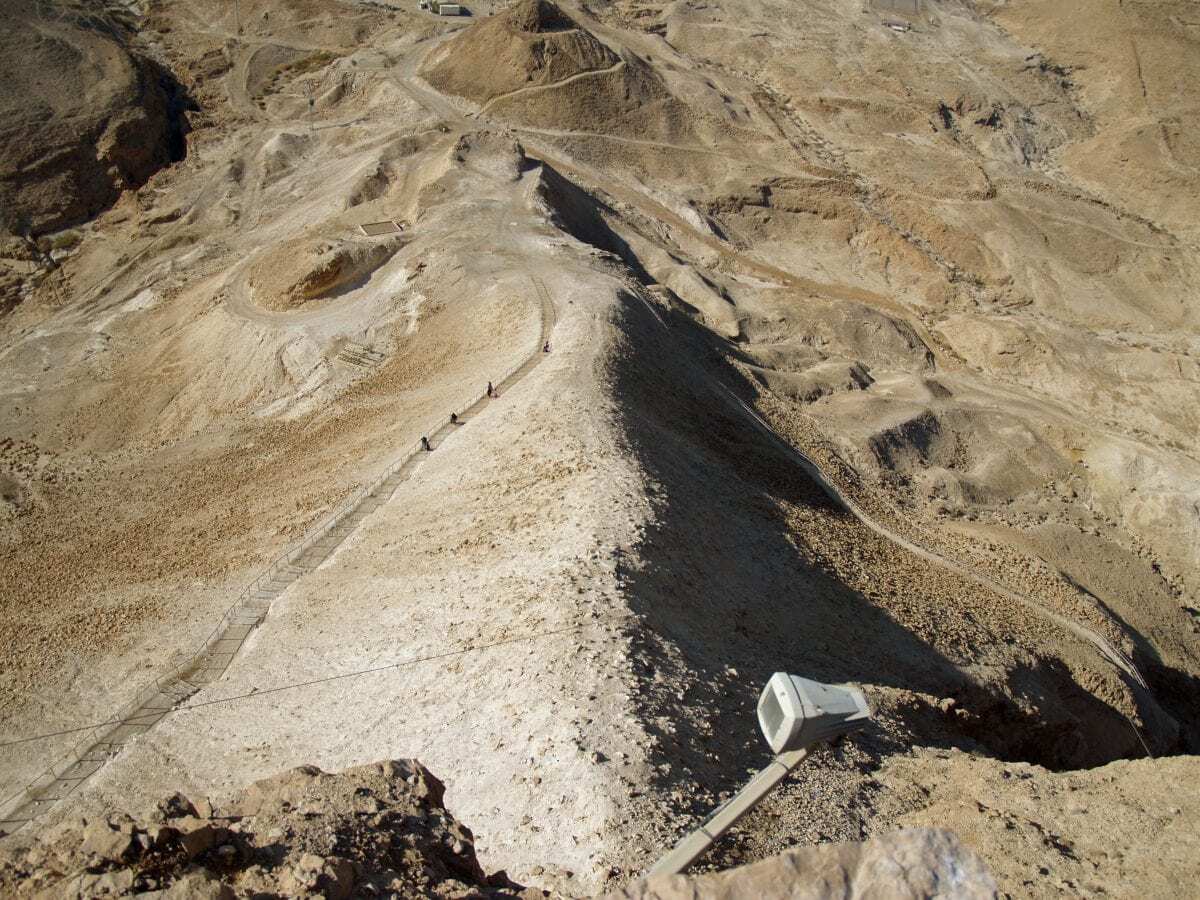
Today Masada is revered in Israel as a symbol of resistance and heroism that has played a role in forging its national identity and was declared a UNESCO World Heritage Site in 2001.
Header Image Credit : Government Press Office (Israel)

